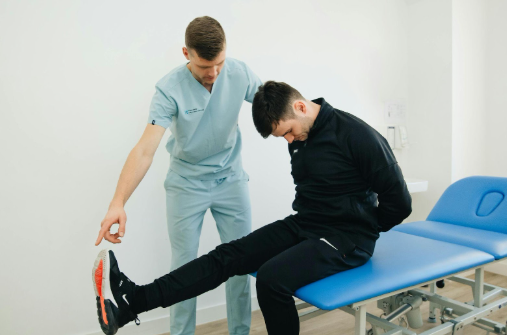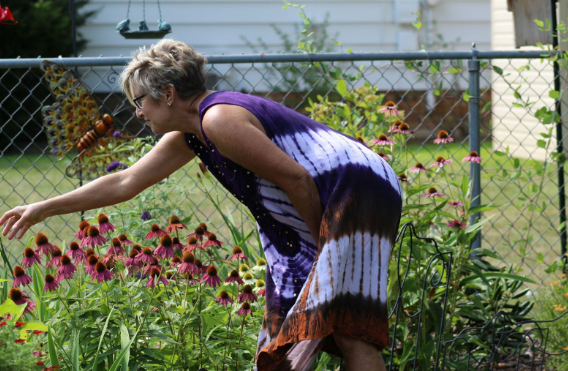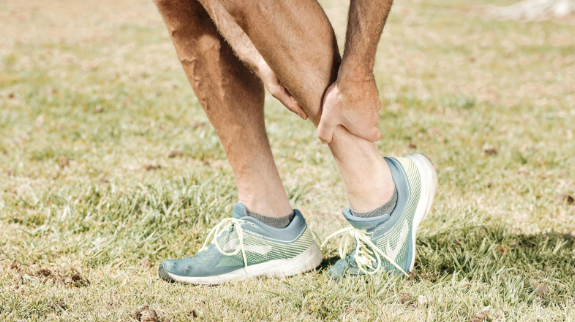Managing Sciatica Flare-Ups in Warm Weather
Managing Sciatica Flare-Ups in Warm Weather

Sciatica can be unpredictable, and for many people, warmer months bring relief and new challenges. The heat might loosen up tight muscles, but it can also lead to inflammation, dehydration, and activity overload. If you experience these potential triggers for sciatic nerve pain during the warm months, you’re not alone.
Knowing what aggravates your sciatica and how to manage it during hot weather can help you stay active without pushing your body past its limit.
Understanding Sciatica
Sciatica pain radiates along the path of the sciatic nerve, which branches from your lower back through your hips, buttocks, and down each leg. It typically occurs when the nerve is compressed by a herniated disk, a bone spur on the spine, or a narrowing of the spine.
While the root issue stays the same, environmental conditions like heat and humidity can change how the pain behaves. Hot weather may cause blood vessels to dilate and tissues to swell, which puts extra pressure on already irritated nerves. Losing fluids through sweating can make muscles cramp or tighten, which can influence your nerve compression.
Tips to Reduce Sciatic Pain
During summer, your body might be more reactive due to allergens, heat exposure, or overexertion. A few adjustments to your routine can help you combat the pain.
Stay Hydrated
The summer heat, especially here in Arkansas, makes dehydration a constant risk. When you are dehydrated, your spinal discs can lose height and pliability, which may increase the risk of herniation and nerve compression. Aim to drink water consistently throughout the day, especially when you're outdoors or exercising. You should also incorporate water-rich foods like watermelon, cucumbers, and oranges into your summer diet for an extra hydration boost.
Focus on Mindful Movement
Movement helps to strengthen the muscles that support your spine, improve flexibility, and increase blood flow to the affected area, which can help reduce inflammation. One good way to incorporate it into your routine is through swimming. The buoyancy of water provides a low-impact environment that supports your body weight, allowing you to strengthen your core and back muscles without jarring your spine.
Manage Long Car Rides
While travel can refresh the mind, it can also challenge the body. Sitting for long periods is a known trigger for sciatica pain. If you’re on a long trip, you can use a rolled towel or a small pillow behind your lower back to maintain spinal alignment. You should also stop regularly to stretch or walk around.
Dress for Comfort and Support
Tight waistbands, stiff fabrics, or unsupportive shoes can worsen nerve pain, especially in the heat. Choose lightweight, breathable clothing that doesn’t restrict your hips or lower back. Supportive footwear with shock absorption can help reduce impact on your spine during walking or standing. If you’ll be on your feet for a while, opt for shoes with cushioned soles and proper arch support to take some of the stress off your sciatic nerve.
At-Home Care for Acute Flare-Ups
Despite your best efforts, a flare-up can still occur. When sciatica pain strikes, having a plan for at-home care can help you find relief more quickly.
- Temperature Therapy: During the initial phase of a flare-up, inflammation is the primary issue. Applying an ice pack wrapped in a towel to the painful area for 15-20 minutes at a time can help reduce swelling and numb the sharp pain. After the initial inflammatory phase, switching to a heating pad can help relax tight muscles and improve blood flow.
- Pain Relievers: Nonsteroidal anti-inflammatory drugs (NSAIDs) such as ibuprofen or naproxen can be effective in reducing both pain and inflammation associated with a sciatica flare-up. It is important to use these medications as directed and to consult with your doctor or pharmacist to ensure they are safe for you.
When to Seek Professional Help
While these at-home strategies can be highly effective for managing occasional flare-ups, it is crucial to recognize when professional medical intervention is needed. If your pain is severe, persistent, or accompanied by significant leg weakness, numbness, or changes in bowel or bladder function, you should seek immediate medical attention.
At
Arkansas Spine and Pain, we offer a comprehensive range of diagnostic and treatment services to pinpoint the root cause of your sciatica and develop a personalized treatment plan. Our compassionate team may recommend options such as:
- Physical Therapy: A structured program to improve your strength, flexibility, and posture.
- Medication Management: Prescription medications to manage more severe pain and inflammation.
- Epidural Injections: Caudal epidural steroid injections can deliver powerful anti-inflammatory medication directly to the source of the problem, providing significant, albeit often temporary, relief.
Our team at
Arkansas Spine and Pain is here to provide the support and advanced care you need to get back to the life you love.
Visit us or call
(501) 227-0184 today to book an appointment!



